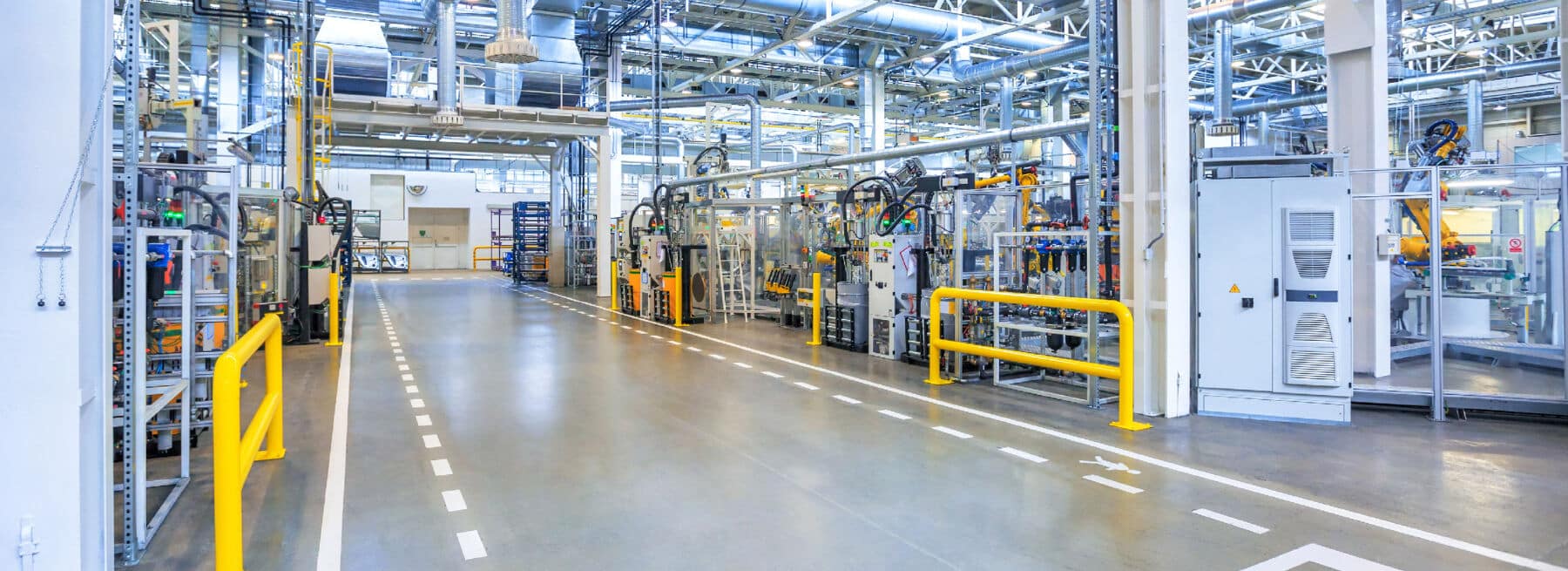Employment within manufacturing and industrial facilities poses significant occupational hazards, surpassing the construction industry, as indicated by the Bureau of Labor Statistics. The BLS data reveals a staggering 373,000 recordable nonfatal occupational injuries in manufacturing for the year 2020, with 135,000 of these injuries leading to substantial time away from work, marking the highest incidence across industries.
Further highlighting the risk, the National Safety Council ranks manufacturing as the third highest in occupations witnessing a substantial number of workplace injuries resulting in extended absences. Inherent to industrial work, employees confront daily perils, including those arising from handling heavy machinery, repetitive motions, exposure to unsafe noise levels, and operating various machines.
Compounded by the scarcity of skilled manufacturing personnel, finding replacements to sustain an uninterrupted supply chain becomes challenging. Therefore, prioritizing safety in industrial facilities becomes imperative to mitigate dangers that can culminate in injuries and fatalities.
The value of safety at manufacturing and logistics facilities is immeasurable. Ensuring equipment availability and optimal condition is vital to meet productivity metrics. While it’s stating the obvious, not all facilities aim to go above the standard recommendations. Addressing unsafe equipment is crucial for preventing failures. It also fosters a safety-oriented culture that uplifts employee morale and shows genuine concern for their safety and wellness.
9 Tips to Ensure Facility Safety and Reliability
In the quest to prevent on-the-job injuries, proactive measures extend beyond the obvious. Anticipating accidents that haven’t occurred requires a strategic approach. The following tips can help ensure facility safety and reliability to protect employees and the company.
1. Conduct regular health and safety risk assessments
A comprehensive health and safety risk assessment goes beyond routine checks and delves into the intricacies of a facility’s health, safety, and physical security practices, identifying both strengths and weaknesses.
Given the critical nature of industrial facility safety, engaging a health and safety consultant to conduct the assessment can help ensure a level of expertise that goes beyond internal capabilities. These consultants specialize in conducting assessments with precision and efficiency, minimizing the likelihood of overlooking potential hazards that could lead to injuries.
Companies that opt for a qualified expert over internal employees could enhance workplace safety, save money, and mitigate the risk of oversights that might result in injuries. The financial investment in a health and safety consultant is a proactive measure that can pay off as it helps reduce risk and accidents. Additionally, collaborating with experts ensures that the risk assessment aligns with industry standards and best practices.
Once potential safety and security gaps are identified, the next crucial step is to document control measures for all these identified hazards and risks. It is imperative to share the findings with the workforce to ensure transparency and understanding.
2. Incorporate a real-time feedback loop
In the dynamic operational landscape, there inevitably comes a day when prompt notifications about noncompliant equipment become imperative. Creating a seamless communication system between those managing the equipment and those responsible for ensuring peak performance can help with timely interventions.
The planning of these communications plays a pivotal role in the effectiveness of the feedback loop. By anticipating scenarios where noncompliance might occur, facilities can develop a strategy to notify managers promptly, preventing the usage of faulty equipment. This proactive approach not only minimizes risks associated with equipment malfunction but also streamlines the process of corrective actions.
In essence, the incorporation of a real-time feedback loop transforms safety management from a reactive to a proactive one. By addressing noncompliance swiftly, facilities can uphold safety standards, minimize risks, and maintain operational efficiency seamlessly. This strategic approach aligns with the overarching goal of creating a secure and responsive work environment.
3. Prioritize daily safety checklists
Developing a specific operator safety and OSHA-compliant checklist that is rigorously followed every quarter fosters a culture of discipline and commitment to regulatory standards. It can also lead to the creation of safety protocols. This systemized approach enhances the overall regimentation and demonstrates a dedication to compliance that goes beyond mere adherence.
These daily checks serve as a proactive measure, identifying potential issues before they escalate into hazards. Beyond mitigating risks, this approach contributes to overall efficiency of facility and warehouse operations by making sure that equipment is in optimal working condition.
4. Incorporate safety telematics
The goal of safety telematics is to refocus energy on acknowledging and rewarding operators who consistently follow safety protocols. Creating a system of rewards for operators achieving top safety metrics introduces an element of positive reinforcement. These rewards can take the form of paid time off or gift cards, celebrating the success of individuals who prioritize safety in their daily activities.
By leveraging technology to monitor and analyze safety metrics, facilities can objectively recognize operators who contribute to a safer working environment. In essence, this strategy transforms safety from a set of rules to a culture that is actively valued and reinforced within the organizational fabric.
5. Prioritize and foster a culture of safety
The concept of a safety culture encapsulates a holistic approach that integrates safety into every facet of a manufacturing facility’s operations. Many facilities claim to have a strong safety culture, but the true differentiator lies in how deeply safety is woven into the fabric of daily activities.
An effective safety culture requires more than the development of processes and procedures with safety checks. It involves a daily commitment to safety checks by workers at the start and end of each workday.
Encouraging a proactive approach to safety reporting is essential. Despite workers being vigilant, studies suggest that safety concerns often go unreported. Establishing a culture that consistently emboldens employees to report problems is vital. Reinforce this message in every communication, providing clear channels for anonymous reporting if necessary.
In essence, creating and maintaining a safety culture is an ongoing, multifaceted effort that requires daily commitment. Beyond compliance, it ingrains safety into the very DNA of the organization.
6. Implement preventive maintenance programs
Regular maintenance supports warranty claims as well as ensures compliance with OSHA requirements, adding a layer of assurance. In the unfortunate event of an accident, one of the first aspects scrutinized is whether safety checklists and maintenance protocols were diligently followed. Keeping comprehensive records of maintenance activities becomes paramount in such instances, serving as a testament to the facility’s commitment to safety.
By keeping equipment in optimal operating conditions throughout its life, facilities can avoid issues stemming from faulty parts, thereby mitigating risks in the long run. In essence, preventive maintenance becomes an investment in both safety and the sustained functionality of assets.
7. Hold training daily
Facilities with the longest injury-free stretches attribute their success to daily safety training or briefings. These briefings serve as an opportunity to reinforce safety protocols, communicate any changes, and address specific safety concerns. The frequency of these sessions contributes to a consistent awareness of safety practices among employees.
An effective training program should also include practical demonstrations on inspecting equipment and preparing tools for work. Workers should be well-versed in the correct procedures for equipment setup, usage, and shutdown, emphasizing the importance of adhering to these steps for their safety and the safety of others.
Critical aspects of training include guidance on the proper use of personal protective equipment (PPE) and gear specific to various activities. Assumptions about workers’ knowledge can lead to unsafe practices, making it crucial to communicate these practices explicitly. Overcommunication on safety matters becomes a deliberate strategy, recognizing that repetition is key to reinforcing these vital protocols.
Daily training sessions represent a powerful and direct strategy for reducing danger and risk in industrial facilities. By making safety a daily focus, facilities empower their workforce with the knowledge and awareness needed to navigate potential hazards, creating a workplace where safety is not just a requirement but an ingrained part of the daily routine.
8. Use visual communication tools
The inherent noise and potential hearing protection measures in a manufacturing facility necessitate the incorporation of visual communication tools. Recognizing that workers might be wearing hearing protection, facilities should implement visual cues to convey important safety information.
One example is the use of visual fire alarms. When the alarm is triggered, the system combines audible alerts with flashing lights, ensuring that individuals who might be busy, sleeping, or unable to hear the alarm receive a visual alert.
Loading docks often use red and green lights as a visual communication tool. The color-coded system simplifies safety messaging, with green indicating a safe status and red signifying an unsafe condition. However, not everyone can tell the difference between red and green. These must have a second way to identify the two lights, such as an R on the red and a G on the green.
Consider integrating the Internet of Things (IoT) and motion detectors that can provide real-time alerts to workers. For instance, workers can wear IoT wearables that communicate with the facility’s equipment. If a forklift, equipped with IoT sensors, detects a worker in its path, it can alert the driver to stop, preventing potential collisions. The seamless integration of visual cues with IoT technologies creates a multi-faceted safety environment.
By relying on traditional visual cues and emerging technologies, facilities can help ensure that safety information is effectively communicated to all workers, promoting a culture of awareness and risk mitigation.
9. Monitor the facility
Even with the implementation of comprehensive safety measures, the dynamic nature of industrial facilities introduces the potential for new vulnerabilities and unsafe situations. Therefore, remote video surveillance emerges as a powerful and cost-effective solution that can provide another layer of safety and security.
While video surveillance is traditionally associated with security applications, its relevance extends to health and safety risk mitigation. Remote video surveillance serves as a proactive tool when equipped with video analytics and monitored by trained operators. Unlike traditional reactive security systems, this proactive approach enables operators to monitor the entire facility and its perimeter simultaneously and effectively.
Video surveillance can confirm whether workers comply with safety processes and procedures, including equipment preparation and use, out-of-place items, tools, and potential OSHA violations.
In addition to real-time monitoring, video surveillance technology can capture everything in recordings. These recordings can serve as valuable resources for resolving safety and security issues. Some facilities use recorded footage in training to reinforce safety protocols and best practices.
The integration of remote video surveillance, coupled with analytics and trained monitoring operators, can deliver a fast return on investment. By enhancing safety, deterring crime, and providing actionable insights, facilities can proactively address potential risks and create a safer working environment.
Have questions about security to help ensure industrial facility safety? Contact us.
Texas Private Security License Number: B14187
California Alarm Operator License Number: ACO7876
Florida Alarm System Contractor I License Number: EF20001598
Tennessee Alarm Contracting Company License Number: 2294
Virginia Private Security Services Business License Number: 11-19499
Alabama Electronic Security License # 002116
Canada TSBC License: LEL0200704

